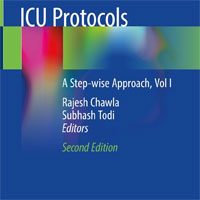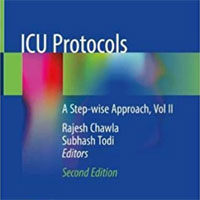Tag: TBI
Management of Pediatric Severe Traumatic Brain Injury
This article provides an algorithm of clinical practice for the bedside practitioner based on the available evidence, treatment protocols described in the articles included in the 2019 guidelines, and consensus that reflects... read more
Intrathoracic Pressure Regulation Therapy Applied to Ventilated Patients for Treatment of Compromised Cerebral Perfusion from Brain Injury
These data support the notion that active intrathoracic pressure regulation, in this limited evaluation, can successfully augment cerebral perfusion by lowering intracranial pressure and increasing mean arterial pressure... read more
Tranexamic Acid For Isolated Penetrating Head Trauma
An aeromedical crew was dispatched to a local emergency department to transport a fourteen year-old female with self-inflicted gunshot wound to the head to a tertiary pediatric trauma hospital. The patient was previously... read more
Guidelines for the Management of Pediatric Severe Traumatic Brain Injury
Update of the Brain Trauma Foundation Guidelines, Third Edition. Severe Traumatic Brain Injury in Infants, Children, and Adolescents in 2019: Some Overdue Progress, Many Remaining Questions, and Exciting Ongoing Work in the... read more
ECMO in the Critical Trauma Patient
Growing evidence suggests the potential use of Extracorporeal membrane oxygenation (ECMO) for the treatment of refractory respiratory failure in adults, but the clinical benefit in polytraumatic patients is not clear. The... read more
The utility of biomarkers in traumatic brain injury clinical management
Currently, TBI management is guided by clinical histories and neuroimaging techniques. While these techniques may be advanced, they are more costly than serum analysis, involve exposure to ionizing radiations, and have certain... read more
Meaning of Intracranial Pressure-to-Blood Pressure Fisher-Transformed Pearson Correlation-Derived Optimal Cerebral Perfusion Pressure
These mechanistic simulations provide insight into the empiric basis of optimal cerebral perfusion pressure and the significance of PRx and Δ CPP. PRx and optimal cerebral perfusion pressure deviations do not directly reflect... read more
Blood test may obviate need for head CTs in brain trauma evaluation
A biomarker test based on the presence of two proteins in the blood appears to be suitable for ruling out significant intracranial injuries in patients with a history of mild traumatic brain injury (TBI) without the need... read more
Presenting Characteristics Associated With Outcome in Children With Severe TBI
Severe traumatic brain injury is a clinically heterogeneous disease that can be accompanied by a range of neurologic impairment and a variety of injury patterns at presentation. This secondary analysis of prospectively collected... read more
Effect of Early Sustained Prophylactic Hypothermia on Neurologic Outcomes Among Patients With Severe TBI
Among patients with severe traumatic brain injury (TBI), early prophylactic hypothermia compared with normothermia did not improve neurologic outcomes at 6 months. These findings do not support the use of early prophylactic... read more
Cognitive Function 3 and 12 Months After ICU Discharge
In this prospective cohort study of Danish ICU patients, we found significantly reduced cognitive function for intensive care patients 3 and 12 months after discharge. We included 161 patients, 79 patients had a 3-month and... read more
Intracranial Pressure Thresholds in Severe Traumatic Brain Injury: Pro
Teleologically, the mammalian brain has evolved to be the central component of life. It coordinates afferent and efferent neural pathways, integrates neurohormonal responses and, in humans, produces higher cortical effects... read more
Intubation in Special Patient Populations: Intracranial Hemorrhage
Lidocaine has weak evidence to support its ICP blunting effects. Fentanyl may be a better choice. Ketamine is a reasonable alternative to etomidate during induction. No differnce in mortality exists between usage of succinylcholine... read more
The Fluid Debate: Balanced or Unbalanced
Consider using balanced fluids in your ED unless you are treating a patient at risk for cerebral edema, or a patient with a chloride responsive metabolic alkalosis, e.g. from gastric losses. Although the superiority of balanced... read more
The Role of Speech and Language Therapy in Critical Care
The role of speech and language therapists (SLTs) in critical care can be unclear so this article sets out the scope of practice to increase awareness of the value of SLTs as part of the wider multidisciplinary team. Speech... read more
Ketamine Alters Hippocampal Cell Proliferation and Improves Learning in Mice after TBI
Ketamine alters hippocampal cell proliferation after traumatic brain injury (TBI). Surprisingly, these changes were associated with improvement in a neurogenesis-related behavioral recall task, suggesting a possible benefit... read more
Ten False Beliefs in Neurocritical Care
1. Only neurointensivists should care about the brain. 2. Clinical examination of neurocritically ill patients is impossible. 3. We should no longer monitor ICP in traumatic brain injury (TBI). 4. The threshold to treat... read more
Association Between Continuous Hyperosmolar Therapy and Survival in Patients with TBI
Intracranial hypertension (ICH) is a major cause of death after traumatic brain injury (TBI). Continuous hyperosmolar therapy (CHT) has been proposed for the treatment of ICH, but its effectiveness is controversial. We compared... read more
Cerebral Autoregulation in the Prediction of Delayed Cerebral Ischemia and Clinical Outcome in Poor-Grade Aneurysmal Subarachnoid Hemorrhage Patients
High initial pressure reactivity index, presumably reflecting early brain injury, but not oxygen reactivity index, was associated with delayed cerebral ischemia and worse clinical outcome in poor-grade subarachnoid hemorrhage... read more
Glycaemic Control Targets After TBI
This meta-analysis of intensive glycaemic control shows no association with reduced mortality in TBI. Intensive glucose control showed a borderline significant reduction in the risk of poor neurological outcome, but markedly... read more
TBI Outcomes in an LMIC Tertiary Care Centre and Performance of Trauma Scores
This observational study of patients sustaining moderate or severe TBI in Sri Lanka (a LMIC) reveals only 46% of patients were alive at 6 months after ICU discharge and only 20% overall attained a good (GOSE 7 or 8) recovery.... read more
The Prognostic Value of MRI in Moderate and Severe TBI
Traumatic brain injury (TBI) is a major cause of death and disability, yet many predictors of outcome are not precise enough to guide initial clinical decision-making. Although increasingly used in the early phase following... read more









